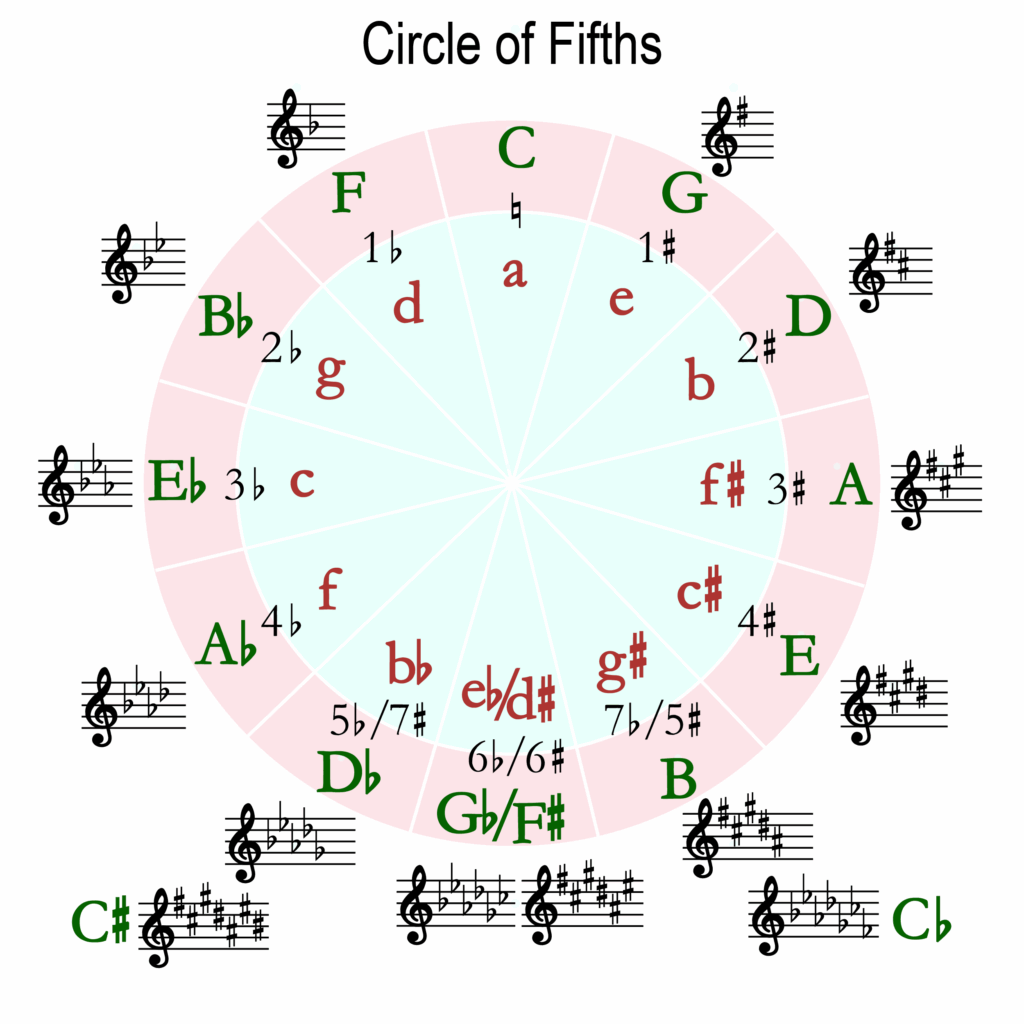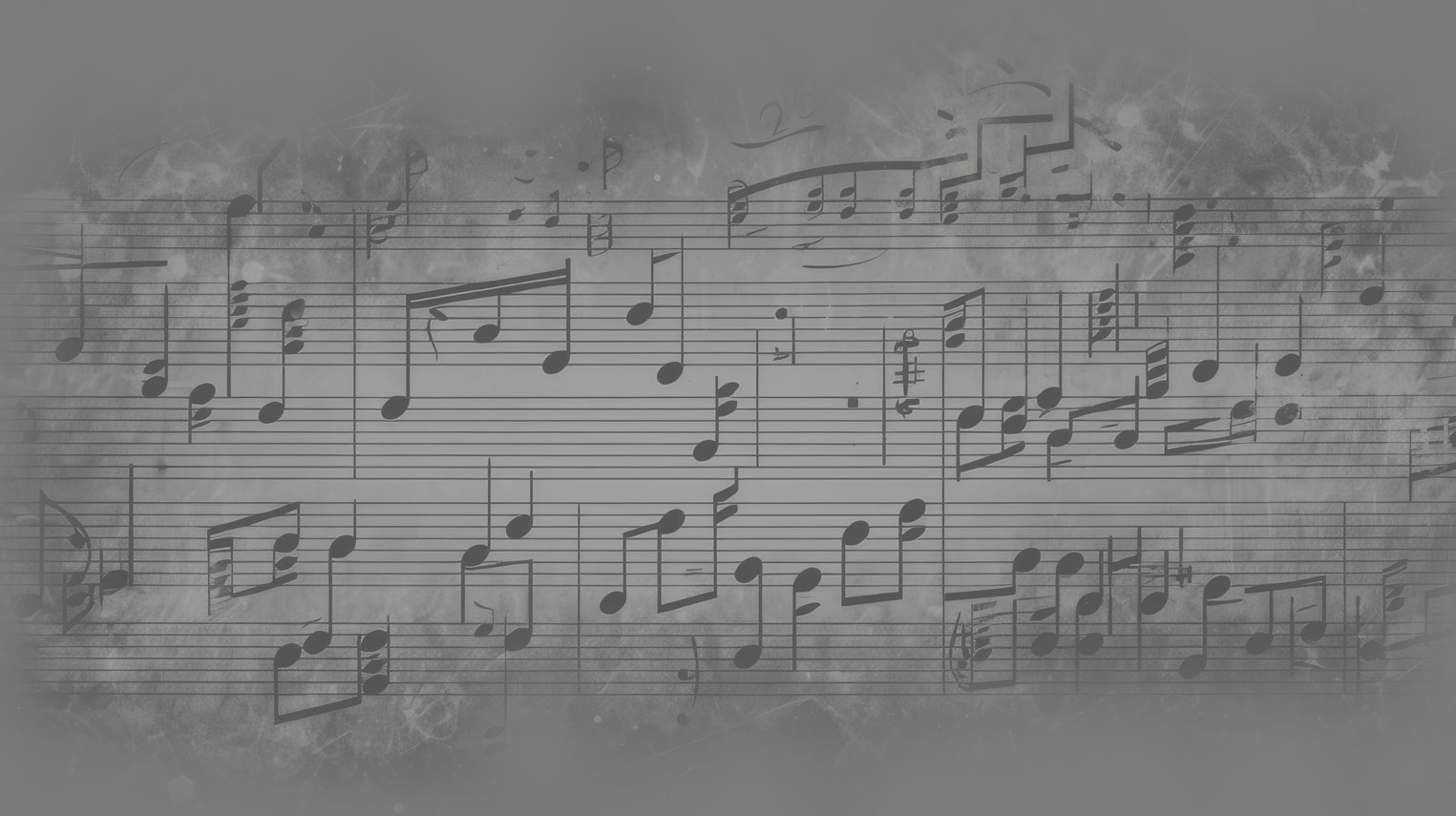Rhythm and Duration
The shape of a note indicates how long it should be held, or its duration.
- Whole Note 𝅝: Held for four beats.
- Half Note 𝅗𝅥: Held for two beats.
- Quarter Note 𝅘𝅥: Held for one beat.
- Eighth Note 𝅘𝅥𝅮: Held for half a beat.
A time signature, like 4/4, tells you the rhythm of the music. The top number indicates how many beats are in each measure (the space between two vertical bar lines), and the bottom number indicates which type of note gets one beat. In 4/4 time, there are four beats per measure, and a quarter note gets one beat.

Key Signatures and Accidentals
A key signature is a set of sharps (♯) or flats (♭) placed after the clef at the beginning of the music. It tells you which notes are to be played sharp or flat throughout the entire piece (or until the key changes). The key signature determines the key of the music, which is the central note and scale around which the piece is built.
An accidental is a sharp, flat, or natural sign that appears within a measure and applies only to the note it precedes.
- Sharp (♯): Raises a note by a half-step.
- Flat (♭): Lowers a note by a half-step.
- Natural (♮): Cancels a previous sharp or flat, restoring the note to its original pitch.
An accidental affects only the note it’s placed next to and any subsequent notes of the same pitch within that same measure. It doesn’t carry over to the next measure unless specified by another accidental.
The circle of fifths is a visual representation of the relationships between the 12 pitches of the chromatic scale. It organizes all 12 major keys (and their relative minors) in a circular pattern, showing the number of sharps or flats in each key signature. Moving clockwise around the circle, each new key is a perfect fifth above the previous one, and you add one sharp. Moving counter-clockwise, each new key is a perfect fourth above the previous one (or a perfect fifth below), and you add one flat.
How to Understand and Build the Circle
The circle is best understood by starting at the top with the key of C Major.
Moving Clockwise (Sharps)
Starting at C Major, which has no sharps or flats, you move clockwise to build keys with sharps. Each step is a perfect fifth up from the previous key.
- C has 0 sharps.
- The key of G is a perfect fifth above C. It has 1 sharp: F♯.
- The key of D is a perfect fifth above G. It has 2 sharps: F♯ and C♯.
- The key of A is a perfect fifth above D. It has 3 sharps: F♯, C♯, and G♯.
- The key of E is a perfect fifth above A. It has 4 sharps: F♯, C♯, G♯, and D♯.
- The key of B is a perfect fifth above E. It has 5 sharps: F♯, C♯, G♯, D♯, and A♯.
- The key of F♯ is a perfect fifth above B. It has 6 sharps: F♯, C♯, G♯, D♯, A♯, and E♯.
- The key of C♯ is a perfect fifth above F♯. It has 7 sharps: all seven notes are sharp.
A helpful way to remember the order of the sharps is with the mnemonic: Father Charles Goes Down And Ends Battle.
Moving Counter-clockwise (Flats)
Starting again at C Major, you can move counter-clockwise to build keys with flats. Each step is a perfect fourth up from the previous key.
- C has 0 flats.
- The key of F is a perfect fourth above C. It has 1 flat: B♭.
- The key of B♭ is a perfect fourth above F. It has 2 flats: B♭ and E♭.
- The key of E♭ is a perfect fourth above B♭. It has 3 flats: B♭, E♭, and A♭.
- The key of A♭ is a perfect fourth above E♭. It has 4 flats: B♭, E♭, A♭, and D♭.
- The key of D♭ is a perfect fourth above A♭. It has 5 flats: B♭, E♭, A♭, D♭, and G♭.
- The key of G♭ is a perfect fourth above D♭. It has 6 flats: all except C♭ are flat.
- The key of C♭ is a perfect fourth above G♭. It has 7 flats: all seven notes are flat.
The mnemonic for the order of flats is the reverse of the sharps: Battle Ends And Down Goes Charles Father.
Why the Circle of Fifths is Important
The circle of fifths is a powerful tool for musicians and composers. It helps you quickly determine the key signature for any major key. It also shows you which keys are closely related to each other (adjacent keys on the circle) and which are distant. This is incredibly useful for understanding harmony, writing chord progressions, and transposing music from one key to another. The inner circle of the diagram often shows the relative minor keys, which share the same key signature as their corresponding major keys.



Leave a Reply
You must be logged in to post a comment.